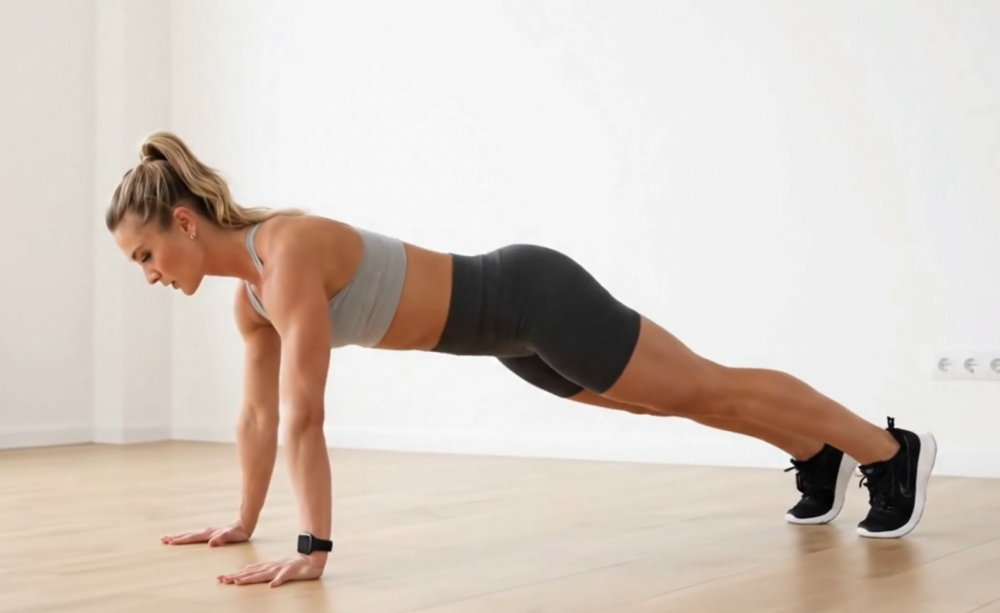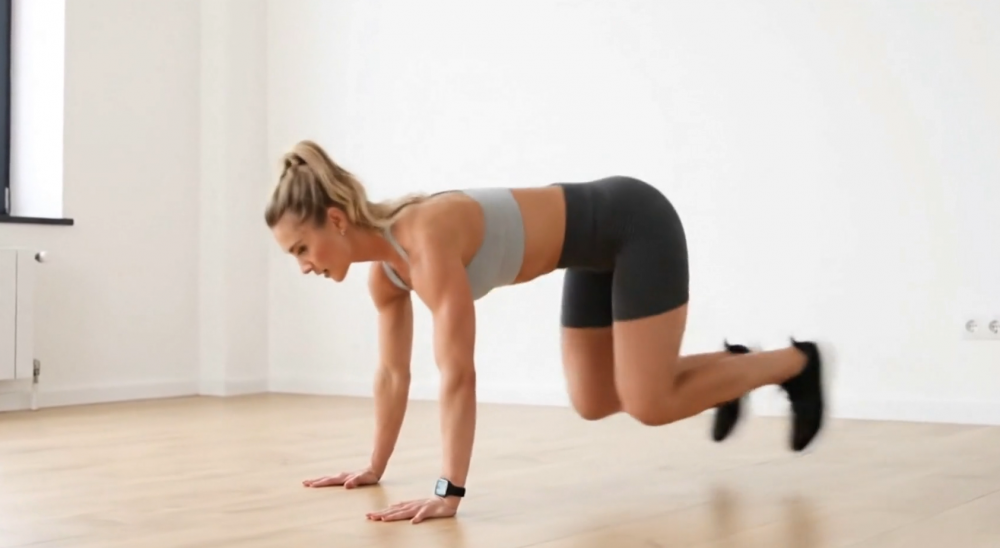Contents
- 1 The Ultimate Guide to Burpees
- 1.1 Proper Form, Muscle Engagement, and Injury Prevention
- 1.2 What Are Burpees?
- 1.3 Benefits of Burpees
- 1.4 How to Perform a Burpee (Step-by-Step)
- 1.5 Burpees Pro Tips for Proper Form
- 1.6 Muscle Groups Engaged in Burpees
- 1.7 1. Squat Phase:
- 1.8 2. Plank Phase:
- 1.9 3. Push-Up Phase (if included):
- 1.10 4. Jump Phase:
- 1.11 Bonus Benefits:
- 1.12 Burpees and Injury Prevention: How to Stay Safe
- 1.13 Recommendations
- 1.14 Conclusion
- 2 Frequently Asked Questions
The Ultimate Guide to Burpees
Proper Form, Muscle Engagement, and Injury Prevention
Burpees are a powerhouse exercise, known for their full-body benefits and ability to torch calories. As one of the most effective bodyweight exercises, burpees combine cardio and strength training, making them a staple in many fitness programs. In this guide, we’ll break down the key aspects of burpees, including proper form, muscle engagement, and how to prevent injuries to help you get the most out of this dynamic exercise.

What Are Burpees?
Burpees are a multi-step exercise that combines a squat, plank, push-up, and jump into one fluid motion. This makes them a versatile and challenging workout that engages several muscle groups at once, providing both strength-building and cardiovascular benefits. Whether you’re looking to enhance your endurance, increase your strength, or lose weight, burpees are a perfect addition to your routine.
Benefits of Burpees
- Full-body workout targeting multiple muscle groups.
- Improves cardiovascular fitness by getting your heart rate up quickly.
- Increases endurance and strength with repeated sets.
- No equipment required, making them a great exercise for home or outdoor workouts.

How to Perform a Burpee (Step-by-Step)
1. Starting Position:
- Stand tall with your feet shoulder-width apart, arms relaxed by your sides.
2. Squat Down:
- Lower your body into a squat by bending your knees and pushing your hips back.
- Keep your chest upright and ensure your thighs are parallel to the ground.
3. Transition to Plank:
- Place your hands on the floor just in front of your feet, shoulder-width apart.
- Kick your feet back into a plank position, making sure your body forms a straight line from head to heels.
4. Push-Up (Optional):
- Lower your chest to the ground, then press back up into a plank. If you’re new to burpees, you can skip the push-up and simply hold the plank for a second.
5. Return to Squat:
- Hop or step your feet back towards your hands, returning to a squat position.
6. Jump Up:
- From the squat, explode upwards into a jump, reaching your arms overhead.
- Land softly with knees slightly bent, ready to start the next repetition.

Burpees Pro Tips for Proper Form
- Keep your core tight during the plank and jump to protect your lower back.
- Land softly on the balls of your feet during the jump to reduce impact on your knees.
- Move smoothly through each phase to maintain control and avoid injury.
Muscle Groups Engaged in Burpees
Burpees are a total-body exercise that works several key muscle groups:
1. Squat Phase:
- Quadriceps, hamstrings, glutes: Strengthens the lower body as you lower into the squat and rise up.
2. Plank Phase:
- Core (abs, obliques, lower back): Engages your stabilizing muscles to maintain a straight line in the plank position.
3. Push-Up Phase (if included):
- Chest, shoulders, triceps: Targets upper-body strength as you lower your chest to the floor and push back up.
4. Jump Phase:
- Calves, quads, glutes: Engages explosive muscles, improving plyometric strength and cardiovascular fitness.
Bonus Benefits:
- Cardiovascular system: Burpees elevate your heart rate quickly, improving endurance and burning calories.
- Coordination and agility: The fluid transitions between movements improve overall body coordination.

Burpees and Injury Prevention: How to Stay Safe
While burpees are incredibly effective, poor technique can lead to injuries, particularly in the knees, lower back, and shoulders. Follow these injury prevention tips to stay safe:
- Focus on Form First: Always prioritize proper form over speed or quantity. Keep your spine neutral, engage your core, and ensure your knees don’t cave inward during the squat.
- Start Slowly and Build Up: If you’re new to burpees or haven’t done them in a while, start with a lower number of reps. Gradually increase intensity and volume as your strength and stamina improve.
- Move with Control: Avoid rushing through the movements. Burpees require deliberate transitions between positions, and moving too quickly can lead to poor form and increased risk of injury.
- Listen to Your Body: Pay attention to how your body feels during and after each set. If you feel pain (especially in your lower back or knees), stop and reassess your form. Rest if needed.
- Consult a Professional: If you have pre-existing health conditions or injuries, it’s wise to consult a fitness expert or healthcare provider before incorporating burpees into your routine.
Recommendations
- Keep your fingers together when you do your Push up.
- 3 set of 10 repetitions is more than enough, with 1-minute rest.
Conclusion
Burpees are a versatile exercise that can enhance overall strength, endurance, and cardiovascular health when performed correctly. By focusing on proper technique and safety, you can integrate burpees into your routine and enjoy their numerous benefits.
Frequently Asked Questions
What muscles do burpees work?
Burpees target your full body — mainly quads, glutes, chest, shoulders, triceps, and core — because you’re moving through a squat, plank, push-up (optional), and jump.
Are burpees good for fat loss?
Yes. Burpees spike your heart rate and burn calories, which helps fat loss when paired with proper nutrition and a consistent training plan.
How many burpees should I do?
It depends on your level. Beginners can start with 10–15 reps, intermediates with 15–30, and advanced trainees can do higher reps or timed sets for conditioning.
Do I have to do the push-up in burpees?
No. The push-up is optional. You can modify by skipping it and still get a great full-body workout.
Are burpees bad for beginners?
Not if you scale them. Start slower, shorten range of motion, and focus on clean reps before increasing speed or reps.
How can I make burpees harder?
Add a push-up, tuck jump, or increase speed. You can also do high-rep intervals or weighted variations.
Do burpees build muscle?
They’re not a pure muscle builder like weight training, but they do improve muscular endurance and recruit multiple muscle groups.
Why do my knees hurt during burpees?
Knee pain usually means poor landing mechanics or weak hip/glute stability. Slow the movement, land softer, and focus on form.
Recommended Articles
Follow our Social Media!








